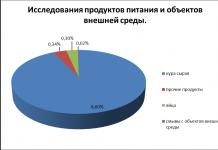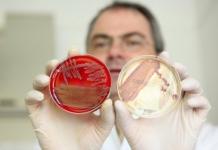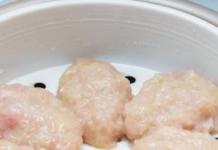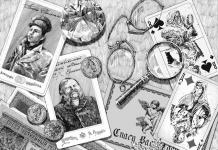Organic fertilizers are compounds that have a beneficial effect on the soil, improving its water resistance. As they decompose, they saturate the soil with mineral nutrients. With organic compounds, it becomes more fertile due to the improvement of the humus layer. It promotes the reproduction and development of microorganisms, thereby affecting biological processes.
Organic substances are many times better than synthetic ones, because they are natural (animal and vegetable origin). They are categorized by function into those that affect the chemical constituents of the soil and affect physical properties soil. Many of the names combine both factors of influence on the earth, because almost all of them contain nitrogen, potassium, vitamins in the form in which the plant can assimilate substances.
Characterization of organic compounds: advantages and disadvantages
They increase the fertility of the soil, contributing to its structural changes in better side... They introduce beneficial microorganisms into the ground that have a positive effect on plants. Restoration of balance in soils. Affordable cost.
The disadvantages of this type of mixtures is the difficult balancing of the soil (an unequal amount of nutrients). Contains a lot of weed seeds. It is easy to infect the soil.
Manure
One of the most best squads manure is deservedly recognized. Its value is determined by what animal it is from, what the animal sleeps on (straw, peat, sawdust). Manure with straw High Quality- due to the fact that the straw, rotting, gives up its useful organic substances. In second place, peat litter can be noted, it is more rare, has high absorption properties, stores nitrogen and ammonia. Sawdust and wood shavings are less effective.
Manure is divided according to the type of animal from which it is received:
- horse. Highlights a large number of heat. Often used for greenhouse plants. With its help, the soil heats up quickly and is used on tough, heavy soils. It is brought in every two to three years;
- sheep (goat). Decomposes quickly, can burn the plant;
- mullein. It decomposes and heats up slowly. The nutritional value is better than all other types. It is invested in heavy soils once every four years, in medium soils - once in three years, in light soils - once every two years;
- pork. Such fertilization is undesirable. Substances in it are difficult to assimilate, have a low heat loss;
- rabbit. Very nutritious and full of nutrients. But more often liquid solutions are used with it.
Disadvantages: you cannot use fresh, you can burn the plant.
Humus
Such organic fertilizer is mainly obtained from animal, and maybe plant origin. If it is made on the basis of manure, then it has high nutritional properties beneficial for plant growth. The best views humus will be made on the basis of horse and cow dung.
Disadvantages: Excessive use of it directly affects the taste characteristics of fruits and vegetables.
Bird droppings
It is a very valuable fertilizer resource with fast action. According to its nutritional properties, it better than manure animal origin.
Disadvantages: It is easy to burn the plant at high dosage in soil.
Peat organic fertilizer
It has a high nitrogen content, but it is not saturated with phosphorus and potassium. Nitrogen in this form is difficult to assimilate. Its big plus is considered to be an improvement in the structure of the soil and an increase in the proportion of humus in the soil. With its help, the soil becomes looser and more saturated with air.
Compost
The most nutritious organic fertilizer in this range will be the one that consists of plants and leaves.
Wood sawdust
This type of fertilizer will help acidify the soil, so use it for those plants that are best suited for such soil. But if you lay them in a thick layer, then this can interfere, quickly loosen the soil. Their maximum usefulness is achieved when mixed with urea.
Bone flour
The basis for its manufacture is the bones of animals, respectively, it has a high content of phosphorus and calcium. Its standard dosage is about three to four kilograms per m2. It decomposes for a long period of time. To speed up the process, you can dissolve it in water. If you need to get a quick result, then it is better to do this in light, loose soil.
Shop fertilizers
The use and application of such fertilizers is very beneficial for the future harvest. You can also purchase them in the store. Vermix biohumus, filled with antibiotics and growth hormones for plants, is very popular. An excellent tool for feeding vegetable crops, fruit and berry, - this is "Sozervay-ka" with salts of humic acids, which well increase soil fertility and productivity.
Application and application to soil
- Correctly adding manure to the soil means pouring no more than three to four kilograms per square meter, but no more. Why is that? With an overabundance of it in the soil and abundant watering, nitrogen compounds are released very quickly, saturating the crop with nitrates. With a high nitrogen content in the soil, plants grow quickly, but do not ripen, forming fruits in the right way. The best way fertilize with manure, if scattering is carried out, this is digging otherwise nitrogen in the open air will evaporate and earthlings will receive nutrients... It cannot be in contact with the root system of plants. It is fraught with burns for landings.
- It is good to feed young plants with compost, they can be mulched, it perfectly keeps moisture in the ground. Cons: a lot of weed seeds and microbes. The ripening young compost cannot be used for planting cucumbers, zucchini, pumpkin, cabbage. It is introduced in a complex and other formulations due to the low content of calcium and magnesium. It can serve as a breeding ground for a bear; before transporting it to the site, check about the presence of such a pest there.
- Ash-based formulations. It does not contain nitrogen, but it cannot be mixed with nitrogen fertilizers, only in turn. The introduction of both species into the soil forms ammonia, which slows down the growth of the plant. Upon contact with liquid, it loses its properties during storage. In alkaline soils, you need to add a little because they are often deoxidized. In clayey, it is best to add ash to autumn period, and in sandy and peaty - in the spring months. You can water plants with it; for this, a proportion of 250 grams of ash per 10 liters of water is taken. It is recommended to water the seedlings only after the appearance of three leaves. It is impossible to water the radish with ash, if it falls on its roots, then the plant goes to the arrow and does not yield a crop.
- Sawdust is one of the most budgetary means for increasing yields, but the gardener needs to be careful with it. Freshness of raw materials is an important aspect. If they are young, they can extract nutrients themselves, increasing the lack of nutrients from the ground. You can mulch them using mineral fertilizers, for example, urea in the proportion of 250 grams of urea is taken in 3 buckets of sawdust. If the soil is acidic, then it is better to lime it before adding sawdust.
- With the help of peat, it is easy to loosen the soil, it passes water well, but it is not rich in useful properties. There is practically no nitrogen in it, so it is best to combine it with other compounds. Before making the peat, it is weathered to remove the harmful compounds of metal salts from it. The weathering time is given about three weeks, after fertilization it is better to dig it up, mixing it with the soil. Peat makes the soil acidic.
- Poultry droppings are very rich in minerals and have antibacterial properties. Contains a lot of uric acid, but does not need to be brought in fresh. It is introduced in a mixture with soil or peat. It can be dissolved in water and used as a top dressing in a ratio of 1:20, its infusion period is about ten days. Before feeding, the earth is thoroughly shed, and tincture is added on top. Poultry droppings begin to be active in 8-10 days. To make the process start faster, you need to cover it with soil. Its application rate is a kilogram per square meter of soil. The validity period is two to three years. If poultry droppings are poured in as top dressing, then it can be done in a lower concentration three to four times per season.
There are organic and mineral fertilizers. There are many opinions, which is better to use? Let us and we try to understand this issue, how to fertilize your site - organic or chemistry?
I received a letter, one of my readers asks: "What fertilizers should be used now for feeding flowers, conifers, lawns ... which are better - organic or chemistry?" Well, I'll try to express my opinion.
Organic and mineral fertilizers
Well, firstly, let's define what organic and mineral fertilizers are:
Organic fertilizers are substances of plant or animal origin, which, when decomposed, form mineral substances necessary for plant growth. Organic fertilizers include manure, humus, compost, bird droppings, sawdust, silt, peat, feces, tree bark, green manure.
Mineral fertilizers- these are mainly those fertilizers that we buy in specialized stores, they contain in their composition substances for plant nutrition in the form of various mineral salts. They are simple (contain one nutrient - nitrogen, phosphorus, potassium, etc.) and complex.
As for whether to use organic or mineral fertilizers, it is, of course, an individual matter, I will only tell you about some pros and cons .
Organic fertilizers are better because they have a longer effect, but mineral fertilizers are absorbed faster, and, by the way, it is very doubtful that only mineral fertilizers contribute to the accumulation of nitrates in plants (and even more so, if we are talking about flowers, this should not bother us at all) ... Organic fertilizers decompose into the same minerals, and their excess with frequent application of organic matter can also contribute to the accumulation of nitrates. Great advantage organic fertilizers- their effect on the composition of the soil, they make it more nutritious, moisture-absorbing, breathable, heal it thanks to the necessary bacteria. But here it is important to know what plants, what kind of soil they prefer, and what kind of soil you have on the site, I mean, the acidity of the soil and its mechanical composition. Mineral fertilizers give quick effect, but do not linger in the soil, washed out and eroded from it, but they are more convenient to use, and this, no doubt, is their big plus. Many flowering plants do not tolerate fresh organic matter, so it should be applied in advance before planting at least a year.
Most garden flowers prefer neutral soils, although there are so-called “calcephiles” (like alkaline soils) and “calcephobes” (like acidic soils). Alkaline soils, for example, love periwinkle, lavender, boxwood, forsythia, onions, ornamental wormwood, and on acidic soils rhododendron, magnolia, erica and heather grow well.
You must also remember the following nuances:
Plants should not be fertilized during flowering,
Before feeding, the plant needs to be watered well,
Plants in containers must be fed without fail,
An increased nitrogen content has a bad effect on flowering, as the plants begin, so to speak, "to fool", that is, to grow rapidly, the stems and leaves become fleshy, but the flowering is very weak, or absent altogether, but such fertilizers are good for decorative leafy plants, for example, hosts.
For my flowers, I usually use any complex mineral fertilizer for flowering plants. And also I fertilize the plants with wood ash... In most areas of central Russia, soils have an increased level of acidity, and ash, in addition to its ability to lower it, contains all the necessary minerals (except nitrogen, nitrogen is contained in manure, as well as in green manure plants), which means it is an excellent universal fertilizer. And besides, wood ash helps to fight various insect pests - slugs and caterpillars. Ash is applied dry or with the help of infusion, its effect can last from two to four years. Mineral fertilizers are applied under perennial flowering plants three times per season (in spring, during budding and after flowering). In my opinion, mineral fertilizers can be used, and sometimes it is necessary, but always supplementing them with organic dressings. In this case, of course, you need to take into account the tastes of your flowers.
As for the lawn, it is advisable to fertilize it twice a year, after the end of spring frosts (in June, if we are talking about central Russia) and in the fall in September - October. For fertilization, you can use both organic and mineral fertilizers, by the way, there are special complex fertilizers for lawns.
Now about the conifers. It must be remembered that they cannot tolerate excess nitrogen, and the best fertilizer for them is compost, and there are also special mineral fertilizers for conifers on sale. In the spring, the soil under the conifers is mulched, and in the summer they like regular watering, namely, the so-called sprinkling, i.e. watering along with the crown, which is carried out in the evening or morning hours.
How do you fertilize your flowers? I look forward to your views on this issue.
Categories ,Lawn flowers, as well as house plants, need careful care, nutrition and feeding. The development, flowering and correct growth of flowers is carried out due to the necessary elements from the soil. Deficiency of such "vitamins" leads to depletion and even death of plants. On the contrary, a sufficient amount of make-up has a beneficial effect on the brightness and growth of flowers. Therefore, having in your garden a flower bed with various flowering plants, you need special care for them.
Care rules
Over time, the soil on which plants and flowers grow is depleted, it becomes less of those nutrients that it was rich in when the flowerbed was just formed. In this regard, there are certain recommendations for feeding it:
- The soil of the flower bed must be fertilized regularly.
- Fertilizer for plants must be applied on time.
- Flowerbeds, if they are annual, should be changed every season.
- Soil conditioning is necessary before planting flowers.
In addition to properly fertilizing a flower bed, you need to know exactly how to do it. Therefore, there are two main types of fertilizers designed for different types of horticultural crops.
Mineral and organic fertilizers
Natural feeding from poultry droppings
As for mineral fertilizers, they include potash, nitrogen, phosphorus substances. They are more suitable for feeding lawns, grass, perennial plants and trees. Flowerbeds are treated with such fertilizer depending on the season. So, the nitrogen composition is used only in spring, when the grass on flower beds and lawns only appears from under the snow.
In turn, for active development and to stimulate the growth of plant roots in the summer season, phosphorus fertilizers are used. In autumn, the soil is treated with potash fertilizers. They prepare a flower bed or lawn for winter when it is required to increase resistance to the formation of fungus and improve the metabolism of winter plants.
It is also worth periodically fertilizing flower beds and lawns with micronutrient fertilizers containing magnesium and iron. It is necessary to introduce such substances directly into the soil or by spraying the leaves.
Fertilization time
The issue of feeding annual plants is much simpler in terms of the frequency of fertilization. Flowers planted in spring for one season are enough to feed only twice a year. The first feeding should be carried out two weeks after the plants are planted in the flower beds, the second - during the period of bud formation. This two-time nutrition will be enough for the flowers to grow and the plants to bear fruit. It is safe to say that the flowers will have lush and rich vegetation.
With perennial flowers and fruit crops, the issue is solved in a different way. These plants should be fed at least three times a year. The first feeding takes place in the spring, when the earth dries up after the moisture has left the ground, the second - during the appearance of buds. The third time it is necessary to fertilize the flower bed after the plants have faded. Such three meals a day is necessary for the supply of flowers for the coming winter.
It is a very mistaken opinion that one cannot overdo it with fertilizers for flowers, since they need constant nutrition and, therefore, grow better. In fact, it is worth remembering the main rule of plant feeding - it is necessary to fertilize in the right quantities, without overusing, and in certain time of the year. Excessive nutrition can burn the roots of plants, as well as the root system located on the surface of the flower bed, thereby only lead to negative consequences and from the standpoint of the life of flowers, and in terms of landscape design created on the site.
When you don't need to fertilize your plants
As mentioned above, the individual characteristics of flowers and plants require special feeding conditions: at what time the feeding is applied, in what form and quantity. For example, flowers that are dormant do not need nourishment. Therefore, there can be no talk of any fertilizers in early spring, while the snow has not melted yet. There will be no benefit from such manipulations - unheated, solid earth will not be able to fully accept nutrients that will not reach the roots of plants. It is better to choose a time when the water has already melted, but the earth has not yet had time to dry. This is the time to feed the soil with nitrogen fertilizers.

Any feeding to plants showing signs of fungal infections is strictly prohibited. Also, you cannot mix the two types of fertilizers in the hope of getting a greater flowering effect. There are special combined mixtures that combine organic compounds and trace elements.
DIY fertilizers
In addition to the huge number of fertilizer options offered in special garden stores, you can do the feeding for your plot with flower beds yourself. There can be many reasons for such experiments: both the economic inconsistency of spending on not very cheap fertilizers, and the inability to carry heavy loads (especially for the elderly), and the distant location of stores relatively personal plot... Therefore, there is a budgetary and profitable option to make fertilizer yourself. Among alternative ways to feed the soil there are such as:

In addition, in the form of fertilizers, you can use:
- Tea brewing;
- Banana peel infusion;
- Bulb peel decoction;
- Wood ash;
- Potato peel infusion;
- Rotten weeds;
- Litter of small pets;
- Overripe straw.
Such methods will save the family budget and diversify the food of flowers. But despite the seemingly simple recipes for the manufacture of home fertilizer, there is a measure for everything. It is recommended to use raw materials and water in a ratio of 1: 5. If we are talking about an infusion of ash, then the proportion should be 1:10.
Regular fertilization of flowers, as well as cutting and watering will create a beautiful landscape design in the flower bed and the entire area. But do not forget that in pursuit of beauty and compositional harmony, it is important to follow the recommendations for proper feeding and caring for plants.
And a little about the secrets of the Author
Have you ever experienced unbearable joint pain? And you know firsthand what it is:
- inability to move easily and comfortably;
- discomfort when going up and down stairs;
- unpleasant crunching, clicking not on their own;
- pain during or after exercise;
- joint inflammation and swelling;
- unreasonable and sometimes unbearable aching pain in the joints ...
Now answer the question: does this suit you? How can you endure such pain? And how much money have you already "poured" on ineffective treatment? That's right - it's time to end it! Do you agree? That is why we decided to publish an exclusive interview with Oleg Gazmanov, in which he revealed the secrets of getting rid of joint pain, arthritis and arthrosis.
Attention, only TODAY!
It is no secret to anyone that those who fertilize plants and soil get a good harvest. On the this moment there is a wide range of fertilizers, both mineral and organic. One of these is horse manure, which is less and less common in our time. Such fertilizer, when applied to the soil, is capable not only of replenishing the reserves of nutrients in it, significantly increasing the yield of crops, but also maintaining this effect for a long time. Read about how to use horse manure as fertilizer in this article.
The effect of using horse manure depends on the crop cultivated in the area fertilized with horse manure. And it becomes more noticeable as a result of decomposition for 2 and 3 years.
Compound
 Horse manure, as an organic fertilizer, is considered one of the most useful and effective. In terms of composition, as well as thermal properties, it is considered the best. Its nitrogen capacity is much greater than in cow, and even more so in pork. In addition to being lighter in weight, such ground is capable of rapidly increasing temperatures and decomposing. Moreover, it practically does not have a repulsive smell.
Horse manure, as an organic fertilizer, is considered one of the most useful and effective. In terms of composition, as well as thermal properties, it is considered the best. Its nitrogen capacity is much greater than in cow, and even more so in pork. In addition to being lighter in weight, such ground is capable of rapidly increasing temperatures and decomposing. Moreover, it practically does not have a repulsive smell.
In percentage terms, its composition is as follows:
- about 70% water;
- about 20% organic matter;
- from 0.2 to 0.8% potassium;
- 0.3-0.8% nitrogen;
- from 0.3 to 0.7% phosphorus;
- about 0.35% calcium.
The most the best option the use of peat bedding is considered, the worst - with sawdust.
Beneficial features
 Along with other types of organic fertilizers, it is horse manure that is beyond competition. If we take for comparison the solid secretions of other animals, then in the horse - the lowest level of moisture content. Due to its loose consistency, such soil decomposes faster, raising the temperature of the soil in the shortest possible time. At the same time, due to the low content of acids in this fertilizer, it is not considered "aggressive". Therefore, its use has a beneficial effect, both on the soil itself and on the plants growing in it. This applies not only to the crops we are accustomed to (potatoes, tomatoes, carrots), but also flowers (in particular - roses).
Along with other types of organic fertilizers, it is horse manure that is beyond competition. If we take for comparison the solid secretions of other animals, then in the horse - the lowest level of moisture content. Due to its loose consistency, such soil decomposes faster, raising the temperature of the soil in the shortest possible time. At the same time, due to the low content of acids in this fertilizer, it is not considered "aggressive". Therefore, its use has a beneficial effect, both on the soil itself and on the plants growing in it. This applies not only to the crops we are accustomed to (potatoes, tomatoes, carrots), but also flowers (in particular - roses).
To others useful properties it can be attributed:
- stimulation of the vital activity of microorganisms in the soil;
- improving the composition of the soil;
- increase in content in it carbon dioxide;
- ensuring optimal processes (air, heat, water);
- helps to loosen heavy soil;
- does not contribute to acidification.
Kinds
There is liquid and dry manure. And the fertilizer is classified, depending on the degree of its decomposition, into four groups.Fresh
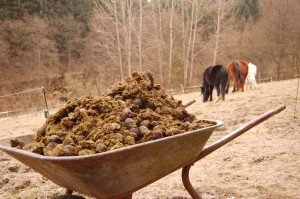 V fresh ground is not recommended to use, as a high concentration of nitrogen in it can "burn" the roots of plants. In addition, fresh manure is a suitable habitat for helminths, fungal bacteria and other additives that can harm the site if the ground is not treated in advance. Such a ground is visually identified by litter residues that do not change color and structure.
V fresh ground is not recommended to use, as a high concentration of nitrogen in it can "burn" the roots of plants. In addition, fresh manure is a suitable habitat for helminths, fungal bacteria and other additives that can harm the site if the ground is not treated in advance. Such a ground is visually identified by litter residues that do not change color and structure.
Fresh horse manure is most suitable for fertilizing flowers. In particular for roses. The most convenient way to feed flower plants is using a fertilizer in the form of a liquid solution. To prepare it, you will need only 1 kg of material, infused in 10 liters of water throughout the day. Watering flowers is done with a similar agent, diluting its concentration by half.
Semi-mature
 As a fertilizer, it is used in a semi-liquid form for feeding garden crops and flowers. Such manure is also added when digging. Semi-rotten horse manure has a beneficial effect on zucchini, cucumbers, spinach and cabbage. In the second year after fertilization on such a site, it is good to form beds for growing potatoes, tomatoes, carrots, beets, other root crops, as well as strawberries. As a mulching layer, you can use this type of ground for rose bushes.
As a fertilizer, it is used in a semi-liquid form for feeding garden crops and flowers. Such manure is also added when digging. Semi-rotten horse manure has a beneficial effect on zucchini, cucumbers, spinach and cabbage. In the second year after fertilization on such a site, it is good to form beds for growing potatoes, tomatoes, carrots, beets, other root crops, as well as strawberries. As a mulching layer, you can use this type of ground for rose bushes.
Well rotted
Suitable ground in this form for fertilizing soil during digging and as a nutrient substrate for growing seedlings (including tomatoes). Usually, the composition of such a soil mixture is 2 parts of soil and 1 part of nutrient material.
Humus
 This is the last stage of decomposition. In this form, manure is considered the most valuable organic fertilizer. Humus is used to fertilize the soil and absolutely all garden crops. It is also useful for flowers. On a site fertilized with humus, the grown root crops acquire better pronounced taste. So, for example, radishes and onions lose their bitterness, parsley, dill and spinach become more aromatic, and the fruits of potatoes and tomatoes delight not only with their size, but also with a pleasant taste.
This is the last stage of decomposition. In this form, manure is considered the most valuable organic fertilizer. Humus is used to fertilize the soil and absolutely all garden crops. It is also useful for flowers. On a site fertilized with humus, the grown root crops acquire better pronounced taste. So, for example, radishes and onions lose their bitterness, parsley, dill and spinach become more aromatic, and the fruits of potatoes and tomatoes delight not only with their size, but also with a pleasant taste.
How to apply correctly
It is better to fertilize the soil with horse manure, which has been stored for at least 1 year in a compost pit. At the same time, the ground, which has been stored for more than 5 years, can be used as an ordinary fertile soil, since nitrogen and other useful substances will simply "evaporate".
The most optimal option for using one-year-old horse manure is considered fertilization and soil cultivation, carried out on the same day. In other words, it is necessary to close up the area planned for planting with horse manure, and immediately plow it.
Application area
 Horse manure is used as fertilizer in greenhouses and hotbeds. As a rule, it is used in this area as biofuel. To do this, you must first remove 30 cm of the top layer from the beds. After that, horse manure can be laid and disinfected, for which each garden bed is watered with a weak solution of potassium permanganate.
Horse manure is used as fertilizer in greenhouses and hotbeds. As a rule, it is used in this area as biofuel. To do this, you must first remove 30 cm of the top layer from the beds. After that, horse manure can be laid and disinfected, for which each garden bed is watered with a weak solution of potassium permanganate.
After completing these procedures, you can fill the top layer of horse manure with earth mixed with wood ash. Then the surface of the soil should be leveled and covered with polyethylene. In this state, the site is left for 2 days, and then taken for sowing seeds. It grows well in areas fertilized with such a land, seedlings.
Used as a fertilizer, fresh horse manure is best suited for the following fruit and vegetable crops:
- potatoes,
- cucumbers,
- zucchini,
- cabbage,
- pumpkins.
It is recommended to make ground for digging in the fall. Based on 1 sq. meter should be made about 5-6 kg of fresh horse manure. It can be diluted to the state of semi-liquid sour cream using a large barrel for this purpose.
Many gardeners have noticed that if such a container with "wandering" ground is placed in a greenhouse where cucumbers are grown, their growth will noticeably accelerate.
But do not forget that the contents of the barrel must be stirred daily. This will contribute to a greater release of carbon dioxide, which, in turn, has a good effect on the growth of various crops and flowers (including roses).
How is this type of land used in relation to specific crops
How to fertilize roses
![]() Horse dung is called "rose fruit jelly" for a reason. Indeed, besides the fact that this fertilizer is natural, it is considered the most acceptable for such a garden and flower culture. It is recommended to use fresh land, which is not six months old.
Horse dung is called "rose fruit jelly" for a reason. Indeed, besides the fact that this fertilizer is natural, it is considered the most acceptable for such a garden and flower culture. It is recommended to use fresh land, which is not six months old.
As you know, bushes garden roses delight with lush and long flowering only with proper care. And in this regard, top dressing using horse manure is an ideal option. Not as acidic as chicken manure or pig manure, horse manure is not capable of harming plants.
As a rule, rose bushes are fertilized with horse manure in the fall, combining the procedure with hilling. Thus, plants will begin to receive all the necessary nutrients already with the arrival of spring. Reapplication of the land can be carried out when the roses are in bloom.
Fertilizers for berry crops
 Fertilization of strawberries is carried out using well-rotted and semi-rotted horse manure. Feeding is carried out with a solution, which is prepared from one part of such land and 10 parts of water, insisting it for a day. For soils with a wetter composition, a 1 to 6 ratio can be used.
Fertilization of strawberries is carried out using well-rotted and semi-rotted horse manure. Feeding is carried out with a solution, which is prepared from one part of such land and 10 parts of water, insisting it for a day. For soils with a wetter composition, a 1 to 6 ratio can be used.
This type of manure is also suitable for planting berry crops. In this case, it is necessary to use only humus, bringing it to the beds in advance. It is possible with the use of horse land to mulch the aisles on the strawberry and strawberry plantations.
Fertilizing potatoes
 For fertilizing potatoes, it is strongly recommended to use semi-rotten horse manure. It is better to introduce fresh land into the soil for growing potatoes in the fall, before plowing the land. In the spring, the site will already be ready for planting tubers, since the manure will partially have been mineralized by this time.
For fertilizing potatoes, it is strongly recommended to use semi-rotten horse manure. It is better to introduce fresh land into the soil for growing potatoes in the fall, before plowing the land. In the spring, the site will already be ready for planting tubers, since the manure will partially have been mineralized by this time.
As practice shows, fertilizing a vegetable garden with fresh horse manure is fraught with not very favorable consequences. As a rule, a high concentration of nitrogen is reflected in potato tubers in the form of rot lesions and "burns".
If it is planned to grow late varieties of potatoes or cabbage on a garden plot, you can introduce such a land by conducting spring processing. Due to the fact that such crops have a sufficiently long period of development and growth, the likelihood of damage to the crop is minimal. Fertilizing a plot with horse ground in the spring, as a rule, they use from 4 to 6 kg of material for an area of 1 sq. m.
LetovSadu.ru
What plants don't like manure fertilization?
Vladimir Zakharov-Wallner
Fresh manure can be applied under cucumbers and cabbage.
You can not bring fresh manure under carrots, onions, peas and many crops, under which it is brought in in the fall or rotted.
From flower crops, manure is loved by roses, peonies, clematis, dahlias, lilacs.
You can not use manure when growing asters (leads to fusarium wilting), nasturtium and marigolds go to the "tops".
For summer people, I use mineral fertilizers, ash, compost.
Fresh manure for bulbous (tulips, daffodils, etc.) is applied 2-3 years before planting.
Bitter!
Those who were human before taking the pills.
Sergei
Conifers ..))
Svetlana
Valentine capricorn
I do not fertilize only carrots fresh manure, but asters began to die in spring, I spilled them with mullein infusion, they will soon bloom
Natalia Alekseeva
only cucumbers and zucchini like fresh manure
Vitalik
those that smell like candy!
Marina Crow
And I read somewhere that manure cannot be applied under a peony during transplantation. And here they wrote that the peony loves. Mine grow and bloom like that without manure.
By the way, there is a danger of overfeeding, there will be a lot of greenery and few flowers.
Valentina Tsutsaeva
Fresh manure does not like potatoes very much. Near the dung heap, bushes die or become covered with scab.
10 natural fertilizers for home flowers
Flowers - what could be more beautiful? Perhaps that is why we - summer residents - grow them not only in our garden plots, but also at home. It is especially pleasant when the snow is sweeping outside the window, and beautiful flowers bloom in the room on the windowsill, isn't it? Today I propose to talk about an important nuance, without which it is problematic to grow healthy, beautiful, lush blooming plants - about natural dressings. If at the dacha we necessarily fertilize the plantings, then when it comes to home flowers, some dressings are neglected. And in vain.When to feed
Home flowers should be fed much more often than we sometimes think. This need is caused, first of all, by the limited area of plant nutrition. And even if your blooming pet grows in a large, spacious pot, this does not mean that it has enough minerals. The plant, in any case, strongly depletes the soil and therefore needs additional feeding. Partly the way out of the situation will be to periodically transplant the plant into a new nutritious soil substrate. But the supply of nutrients contained in this very substrate will last for about two months, but not for six months or even a year, as many novice flower growers believe. And after these very two months, the plant, especially if it begins to bloom or grow actively, must be fed. The only exception will be plants in which a dormant period has begun: they temporarily do not need feeding. The signal that you need to urgently start feeding home flowers are:- slow growth;
- weak elongated stems;
- pale, poorly colored, overly small, drooping leaves;
- unwillingness to bloom;
- poor disease resistance, yellowing and shedding of leaves, the appearance of various spots on them and other signs of ill health.
1. Sugar
 Perhaps the most popular natural fertilizer used to feed indoor flowers is sugar. Yes, it’s sugar, you don’t think. Who first guessed to use it as a fertilizer for plants, history is silent, but we can successfully use this method to feed our own flowers.
Perhaps the most popular natural fertilizer used to feed indoor flowers is sugar. Yes, it’s sugar, you don’t think. Who first guessed to use it as a fertilizer for plants, history is silent, but we can successfully use this method to feed our own flowers. What is the use of sugar feeding
From chemistry lessons, we remember that sugar breaks down into fructose and glucose. We don't need the first, but the second, that is, glucose, performs 2 functions at once. First of all, it serves as a source of energy for all vital processes of plants (respiration, absorption of various nutrients, etc.), and secondly, it is an excellent building material, contributing to the formation of complex organic molecules. True, there is one caveat: glucose is an excellent builder only if it is well absorbed, and carbon dioxide is needed for it to be absorbed. With an insufficient concentration of carbon dioxide, once in the root zone of plants, sugar will turn from a builder into a source of nutrition for various molds, root rot, and so on. Therefore, together with feeding plants with sugar, it makes sense to use one of the EM-preparations, for example, "Baikal EM-1" - from such joint feeding will be 100% good.How to feed plants with sugar
To prepare "sugar" top dressing, dilute 1 tbsp. sugar in 0.5 liters of water, or simply sprinkle with sugar and then pour over the soil in a flower pot.How often can you use sugar for dressing?
You should resort to such feeding of home flowers no more than once a month, so do not overdo it.Sugar or glucose?
Instead of sugar, you can also feed home flowers with ordinary glucose, which is sold at the pharmacy. Such dressings will be even more effective than "sugar" ones. To do this, 1 tablet of glucose must be diluted in a liter of water. It is also necessary to water or spray plants with "glucose" water no more than once a month.2. Slept coffee
 Sleep coffee is an excellent fertilizer for all home flowers (and not only home flowers), especially since this fertilizer does not need to be specially prepared. Just after drinking a cup of coffee, do not pour out coffee grounds, and mix it with earth in a flowerpot. Thanks to this simple technique, the earth will become looser and lighter. In addition, the acidity of the soil will increase and there will be more oxygen in it.
Sleep coffee is an excellent fertilizer for all home flowers (and not only home flowers), especially since this fertilizer does not need to be specially prepared. Just after drinking a cup of coffee, do not pour out coffee grounds, and mix it with earth in a flowerpot. Thanks to this simple technique, the earth will become looser and lighter. In addition, the acidity of the soil will increase and there will be more oxygen in it. What flowers like coffee
Using drunk coffee as a top dressing for home flowers, remember: by no means all flowers have a good effect on the acidity of the soil. Feeding drunk coffee is useful not only for home flowers, many plants like them, including: azaleas, gladioli, lilies, all types of roses, rhododendrons and many evergreens.Not coffee alone
As a dressing for home flowers, they often use not only drunk coffee, but also tea leaves. Unfortunately, it can give not only a positive, but also a negative effect. Undoubtedly, such additives will make the soil in a flower pot looser, but do not forget that black flies (sciarids) simply "adore" tea leaves in the soil, so be careful.3. Citrus and other fruits
 Peels of tangerines, oranges and even bananas can be excellent fertilizers for indoor plants. True, for this you will have to "conjure" over them a little. To prepare fertilizer from citrus fruits, their zest must be crushed, filled with about a third of it. liter jar and pour boiling water to the top of this jar. Having insisted such a "citrus" fertilizer throughout the day, we take out the peels, bring the water in the jar up to a liter by volume again, adding pure water, and water our flowers. In approximately the same way, fertilizer is prepared from banana peels: chop them, fill a liter jar to half and fill it to the top with water. We insist on fertilizer for a day, after which we filter, discard the skins, and fill the jar to the top again clean water... Unlike citrus fruits, banana skins can also be added directly to the soil: when transplanting home flowers, add some pre-dried and chopped banana skins to the pot with nutrient soil. Over time, they will rot and feed the plants with microelements that will have a beneficial effect on the growth of green mass. And from citrus peel and banana peel, you can prepare a nutritious mix for plant nutrition. For this, chopped zest and banana peel (in equal parts) are filled up to a third three-liter jar... Add 2 teaspoons of sugar and, pouring everything with warm water, let it brew for 3 weeks in a warm place. From time to time, such a nutritious mix needs to be shaken, but don't worry - a very decent aroma emanates from it :) After 3 weeks you will receive a light yellow cloudy liquid that is perfectly stored in the refrigerator. For top dressing, it must be diluted 1:20 with clean water and safely used once a month.
Peels of tangerines, oranges and even bananas can be excellent fertilizers for indoor plants. True, for this you will have to "conjure" over them a little. To prepare fertilizer from citrus fruits, their zest must be crushed, filled with about a third of it. liter jar and pour boiling water to the top of this jar. Having insisted such a "citrus" fertilizer throughout the day, we take out the peels, bring the water in the jar up to a liter by volume again, adding pure water, and water our flowers. In approximately the same way, fertilizer is prepared from banana peels: chop them, fill a liter jar to half and fill it to the top with water. We insist on fertilizer for a day, after which we filter, discard the skins, and fill the jar to the top again clean water... Unlike citrus fruits, banana skins can also be added directly to the soil: when transplanting home flowers, add some pre-dried and chopped banana skins to the pot with nutrient soil. Over time, they will rot and feed the plants with microelements that will have a beneficial effect on the growth of green mass. And from citrus peel and banana peel, you can prepare a nutritious mix for plant nutrition. For this, chopped zest and banana peel (in equal parts) are filled up to a third three-liter jar... Add 2 teaspoons of sugar and, pouring everything with warm water, let it brew for 3 weeks in a warm place. From time to time, such a nutritious mix needs to be shaken, but don't worry - a very decent aroma emanates from it :) After 3 weeks you will receive a light yellow cloudy liquid that is perfectly stored in the refrigerator. For top dressing, it must be diluted 1:20 with clean water and safely used once a month. 4. Ash
 The benefits of ash as fertilizer are underestimated by many, but in vain. After all, ash contains potassium, phosphorus, magnesium, calcium, iron, zinc and even sulfur. Moreover, potassium and phosphorus are contained in ash in a form readily available to plants, which makes ash one of the the best fertilizers for flowers.
The benefits of ash as fertilizer are underestimated by many, but in vain. After all, ash contains potassium, phosphorus, magnesium, calcium, iron, zinc and even sulfur. Moreover, potassium and phosphorus are contained in ash in a form readily available to plants, which makes ash one of the the best fertilizers for flowers. How to use ash for fertilizing home flowers
To feed the flowers, the ash can be simply mixed with the soil when replanting the plants. So you will not only make the soil substrate more nutritious, but also disinfect it, so that the roots damaged during transplantation will definitely not rot. And you can also prepare a liquid top dressing for home flowers from ash. For this, 1 tablespoon of ash is diluted in a liter of water.5. Yeast is an excellent growth stimulant for home flowers
 Did you know that yeast can be used for more than just cooking delicious kvass and yeast dough? It turns out that yeast can be used to make an excellent growth-stimulating solution for plant nutrition. Yeast secretes a lot of nutrients that actively stimulate plant growth, such as phytohormones, B vitamins and auxins. In addition, yeast contains cytokinins, hormones that help regulate cell differentiation and division; the presence of these substances also has a beneficial effect on plants. By the way, unlike most home dressings, so to speak, cooking, yeast dressings have been repeatedly investigated by scientists. As a result, it has been proven: thanks to them, the activity of microorganisms in the soil sharply increases, a rapid mineralization of organic matter occurs, and the release of carbon dioxide significantly increases. Therefore, fertilizing plants with a yeast nutrient solution is equated to fertilizing with complete mineral fertilizers.
Did you know that yeast can be used for more than just cooking delicious kvass and yeast dough? It turns out that yeast can be used to make an excellent growth-stimulating solution for plant nutrition. Yeast secretes a lot of nutrients that actively stimulate plant growth, such as phytohormones, B vitamins and auxins. In addition, yeast contains cytokinins, hormones that help regulate cell differentiation and division; the presence of these substances also has a beneficial effect on plants. By the way, unlike most home dressings, so to speak, cooking, yeast dressings have been repeatedly investigated by scientists. As a result, it has been proven: thanks to them, the activity of microorganisms in the soil sharply increases, a rapid mineralization of organic matter occurs, and the release of carbon dioxide significantly increases. Therefore, fertilizing plants with a yeast nutrient solution is equated to fertilizing with complete mineral fertilizers. How to make yeast nutrient solution
To prepare a yeast feed, dissolve 10 grams of yeast and 1 tbsp. a spoonful of sugar in 1 liter of lukewarm water. If there is no ordinary yeast at hand, you can use dry yeast, dissolving 10 grams of dry yeast and 3 tbsp. tablespoons of sugar in 10 liters of water. Regardless of which yeast you used to make the nutrient solution - regular or dry - let it sit for about 2 hours before feeding the plants. Then the solution is diluted with water in a ratio of 1: 5 and poured over the earth in pots with plants.6. Onion cocktail
 The familiar and so beloved onion, without which it is simply impossible to imagine our cuisine, can be successfully used not only in cooking. A "life-giving cocktail" made from onion husks will have a beneficial effect on the growth of all domestic plants without exception, as it contains a full set of microelements.
The familiar and so beloved onion, without which it is simply impossible to imagine our cuisine, can be successfully used not only in cooking. A "life-giving cocktail" made from onion husks will have a beneficial effect on the growth of all domestic plants without exception, as it contains a full set of microelements. How to make an onion cocktail
There is nothing difficult in making a cocktail from onion peel, the only caveat: it cannot be stored for a long time, so this dressing must be prepared anew every time. So, to prepare an onion cocktail, you need to pour about 50 grams of onion husks with 2 liters of hot water, bring the broth to a boil and, after boiling for about 10 minutes, let it brew for three hours. After the broth has cooled down, filter it and spray the plants.7. Humus
Humus is truly a universal fertilizer, which is used with equal success both for feeding plants in a garden, and for feeding indoor flowers. That is why many growers rightly believe that better fertilizer you simply will not find it: nutritious and readily available, it has a lot of advantages. But humus humus discord, and if the main qualities of different types Since this fertilizer is about the same, different houseplants prefer different humus as top dressing. So, for example, ficuses, palms, citrus fruits, dieffenbachia and monstera love humus based on bird droppings, the effect of which is much higher than from feeding with mullein. This is due to the fact that bird droppings are several times more nutritious than mullein, and that is why it should be used very carefully for feeding most indoor plants, using only for large and rapidly growing species. Before using humus with bird droppings, it must be diluted with water (10 grams per 3 liters of water) to obtain a liquid of a weak turbid greenish hue, and before fertilizing the flowers, the soil in pots should be slightly watered with ordinary water. To feed the rest of your indoor flowers, it is best to use leafy humus - for example, by adding it to the soil during plant transplantation. Leafy humus contains a number of elements necessary for plant nutrition. In addition, it significantly affects the structure of the soil, significantly improving it. You can also feed the flowers with humus based on cow (pork and so on) manure, for which 100 grams of humus is diluted in 10 liters of water. Using humus for feeding home flowers, be prepared for the fact that for some time a not very pleasant smell will come from the pots, which will disappear within a few hours. There will be no smell only if you use humus prepared using accelerated technology, which does not contain weed seeds and pathogens. True, it is not recommended to use it as a liquid dressing: it must be mixed with the ground during plant transplantation, using it as a baking powder for heavy soils.8. Decoctions of vegetables
The use of decoctions of vegetables (naturally, not salted) for feeding is rather doubtful, but many believe in the miraculous effect of such an unusual fertilizer, arguing that the decoction of vegetables is very nutritious for home plants and can only benefit them. Whether this is so, I personally do not presume to assert - this dressing did not affect my flowers in any way, but I could be wrong; I will be glad if you convince me.9. Aquarium water
 Ordinary aquarium water can be an excellent alternative to purchased fertilizers. It contains a large amount of substances that perfectly stimulate plant growth, it is very soft, has a neutral pH. But it is recommended to use it for dressing in spring or early summer - at the moments when the plants begin to actively grow leaves and shoots. But starting from the middle of summer, it is better not to use aquarium water for home flowers. Again, everything is fine in moderation, so you need to feed the plants with aquarium water no more than once a month, otherwise a lot of microscopic algae, getting into the soil of a potted flower, will multiply greatly, as a result of which the soil will turn green and sour.
Ordinary aquarium water can be an excellent alternative to purchased fertilizers. It contains a large amount of substances that perfectly stimulate plant growth, it is very soft, has a neutral pH. But it is recommended to use it for dressing in spring or early summer - at the moments when the plants begin to actively grow leaves and shoots. But starting from the middle of summer, it is better not to use aquarium water for home flowers. Again, everything is fine in moderation, so you need to feed the plants with aquarium water no more than once a month, otherwise a lot of microscopic algae, getting into the soil of a potted flower, will multiply greatly, as a result of which the soil will turn green and sour. 10. Succinic acid
 Succinic acid - a substance that is obtained after processing natural amber - has a lot of useful qualities, due to which it is widely used, including for feeding home flowers. Succinic acid is obtained in the form of a white crystalline powder, somewhat similar to citric acid as in outward appearance, and to taste. To prepare a nutrient solution, dissolve 1 gram in 5 liters of water. This liquid can not only be watered, but also sprayed on indoor plants. Especially such top dressing is loved by begonias, aglaonems, citrus fruits, chlorophytums, ficuses, haworthia, prickly pear and fat women. Please note: you can use succinic acid for feeding home flowers no more than once a year, otherwise you risk getting the opposite effect. In addition to the 10 most popular fertilizers for home flowers, there are several more options that are used less often, but from this, according to their supporters, they are no less effective:
Succinic acid - a substance that is obtained after processing natural amber - has a lot of useful qualities, due to which it is widely used, including for feeding home flowers. Succinic acid is obtained in the form of a white crystalline powder, somewhat similar to citric acid as in outward appearance, and to taste. To prepare a nutrient solution, dissolve 1 gram in 5 liters of water. This liquid can not only be watered, but also sprayed on indoor plants. Especially such top dressing is loved by begonias, aglaonems, citrus fruits, chlorophytums, ficuses, haworthia, prickly pear and fat women. Please note: you can use succinic acid for feeding home flowers no more than once a year, otherwise you risk getting the opposite effect. In addition to the 10 most popular fertilizers for home flowers, there are several more options that are used less often, but from this, according to their supporters, they are no less effective: - filtered water left over from washing meat and fish, is also considered a good flower fertilizer; however, I didn’t have a chance to come across scientific confirmation of this fact, maybe you were more fortunate? If you have already had the opportunity to be convinced of the miraculous power of such dressings, tell us about it in the comments, please;
- some growers use for feeding home flowers water from rinsing cereals: buckwheat, rice, millet, etc., which contains iron, silicon, phosphorus and magnesium;
- eggshell, according to many lovers of home flowers, is also very useful. It is buried in the soil during plant transplantation, water is insisted on it, which is used for irrigation, but whether it is actually a top dressing is a question. Yes, eggshells really contain a large amount of calcium, but it is practically inaccessible to plants, and then what is the use of it? Moreover, a very limited number of indoor flowers are distinguished by their love for calcium, and its excess in the soil only contributes to the fact that chlorosis begins in plants. So it turns out that the use of eggshells as fertilizer is very doubtful, except that it can become an excellent drainage;
- toothpaste and tooth powder also serve as fertilizers for home flowers. To prepare a mix with tooth powder, you need 3 tbsp. tablespoons of powder, 3 tablespoons of wood ash and 1 tbsp. spoon copper sulfate dilute in a liter of water. You do not need to insist on this fertilizer; you can apply it immediately after preparation. It is very easy and quick to prepare fertilizers with toothpaste: dissolve a third of a tube of toothpaste in 1 liter of water, this feeding will nourish the roots of flowers, and they will acquire a healthier appearance.
- do not feed the plants transplanted into new soil earlier than after 2 months, because the nutrient soil also contains fertilizers, an excess of which will only lead to the death of the plant;
- before fertilizing the plants, spill the soil with plain clean water, this will help you not to destroy them if the fertilizer turns out to be concentrated;
- all weakened or diseased plants must be fed very carefully, using a much lower concentration of fertilizer solution for these purposes; no need to make additional fertilizing all year round, home flowers need fertilization only during the spring-summer period.
7dach.ru
Flowers are gourmets!))) What flowers like to indulge in coffee

10 NATURAL HOME FLOWER FERTILIZERS
I got the impression that I ended up in a florist school!
I have never met such a detailed material about feeding home flowers!)))
How to feed the flowers with sugar, how many times a month. What natural fertilizers should be used with great care. Why do you need to fertilize flowers with succinic acid? And many others - wonderful, and most importantly, important tips I learned!
Read the message carefully!
Find out everything about dressing indoor flowers - WITHOUT CHEMICALS!
Today I propose to talk about an important nuance, without which it is problematic to grow healthy, beautiful, lush blooming plants - about natural dressings. If at the dacha we definitely fertilize the plantings, then when it comes to home flowers, some people neglect feeding, but in vain!))
WHEN TO FEED
Home flowers should be fed much more often than we sometimes think. This need is caused, first of all, by the limited area of plant nutrition. And even if your blooming pet grows in a large, spacious pot, this does not mean that it has enough minerals. The plant, in any case, strongly depletes the soil and therefore needs additional feeding.
Partly the way out of the situation will be to periodically transplant the plant into a new nutritious soil substrate. But the supply of nutrients contained in this very substrate will last for about two months, but not for six months or even a year, as many novice flower growers believe. And after these very two months, the plant, especially if it begins to bloom or grow actively, must be fed. The only exception will be plants in which a dormant period has begun: they temporarily do not need feeding.
The signal that you need to urgently start feeding home flowers are:
✔ slow growth;
✔ weak elongated stems;
✔ pale, poorly colored, overly small, drooping leaves;
✔ unwillingness to bloom;
✔ Poor disease resistance, yellowing and shedding of leaves, the appearance of various spots on them and other signs of ill health.
Ideally, of course, it is better not to bring it to this, so let's talk about what natural fertilizers we can use for our pets and how.
1. SUGAR
Perhaps the most popular natural fertilizer used to feed indoor flowers is sugar. Yes, it’s sugar, you don’t think. Who first guessed to use it as a fertilizer for plants, history is silent, but we can successfully use this method to feed our own flowers.
WHAT IS THE USE OF SUGAR FEEDING
From chemistry lessons, we remember that sugar breaks down into fructose and glucose. We don't need the first, but the second, that is, glucose, performs 2 functions at once. First of all, it serves as a source of energy for all vital processes of plants (respiration, absorption of various nutrients, etc.), and secondly, it is an excellent building material, contributing to the formation of complex organic molecules.
True, there is one caveat: glucose is an excellent builder only if it is well absorbed, and carbon dioxide is needed for it to be absorbed. With an insufficient concentration of carbon dioxide, once in the root zone of plants, sugar will turn from a builder into a source of nutrition for various molds, root rot, and so on. Therefore, together with feeding plants with sugar, it makes sense to use one of the EM-preparations, for example, "Baikal EM-1" - from such joint feeding will be 100% good.
HOW TO FEED FLOWERS WITH SUGAR
To prepare "sugar" top dressing, dilute 1 tbsp. sugar in 0.5 liters of water, or simply sprinkle with sugar and then pour over the soil in a flower pot.
HOW OFTEN CAN YOU USE SUGAR FOR FEEDING?
You should resort to such feeding of home flowers no more than once a month, so do not overdo it.
SUGAR OR GLUCOSE?
Instead of sugar, you can also feed home flowers with ordinary glucose, which is sold at the pharmacy. Such dressings will be even more effective than "sugar" ones. To do this, 1 tablet of glucose must be diluted in a liter of water. It is also necessary to water or spray plants with "glucose" water no more than once a month.
2 SINKED COFFEE
Sleep coffee is an excellent fertilizer for all home flowers (and not only home flowers), especially since this fertilizer does not need to be specially prepared. Just after drinking a cup of coffee, do not pour out the coffee grounds, but mix it with the earth in the flowerpot. Thanks to this simple technique, the earth will become looser and lighter. In addition, the acidity of the soil will increase and there will be more oxygen in it.
WHAT FLOWERS LOVE COFFEE
Using drunk coffee as a top dressing for home flowers, remember: by no means all flowers have a good effect on the acidity of the soil. Feeding drunk coffee is useful not only for home flowers, many plants like them, including: azaleas, gladioli, lilies, all types of roses, rhododendrons and many evergreens.
NOT COFFEE ONE
As a dressing for home flowers, they often use not only drunk coffee, but also tea leaves. Unfortunately, it can give not only a positive, but also a negative effect. Undoubtedly, such additives will make the soil in a flower pot looser, but do not forget that black flies (sciarids) simply "adore" tea leaves in the soil, so be careful.
3. CITRUS AND OTHER FRUITS
Peels of tangerines, oranges and even bananas can be excellent fertilizers for indoor plants. True, for this you will have to do some magic over them.
To prepare fertilizer from citrus fruits, their zest must be crushed, filled with about a third of a liter jar with it and filled with boiling water to the top. Having insisted such a "citrus" fertilizer throughout the day, we take out the peels, bring the water in the jar up to a liter by volume again, adding pure water, and water our flowers.
In approximately the same way, fertilizer is prepared from banana peels: chop them, fill a liter jar to half and fill it to the top with water. We insist on fertilizing for a day, after which we filter, discard the skins, and fill the jar again to the brim with clean water.
Unlike citrus fruits, banana skins can also be added directly to the soil: when transplanting home flowers, add some pre-dried and chopped banana skins to the pot with nutrient soil. Over time, they will rot and feed the plants with microelements that will have a beneficial effect on the growth of green mass.
And from citrus peel and banana peel, you can prepare a nutritious mix for plant nutrition. For this, chopped zest and banana peel (in equal proportions) fill up to a third a three-liter jar. Add 2 teaspoons of sugar and, pouring everything with warm water, let it brew for 3 weeks in a warm place. From time to time, such a nutritious mix needs to be shaken, but don't worry - a very decent aroma emanates from it :) After 3 weeks you will receive a light yellow cloudy liquid that is perfectly stored in the refrigerator. For top dressing, it must be diluted 1:20 with clean water and safely used once a month.
4.3OLA

The benefits of ash as fertilizer are underestimated by many, but in vain. After all, ash contains potassium, phosphorus, magnesium, calcium, iron, zinc and even sulfur. Moreover, potassium and phosphorus are contained in ash in a form readily available to plants, which makes ash one of the best fertilizers for flowers.
HOW TO USE ASH
To feed the flowers, the ash can be simply mixed with the soil when replanting the plants. So you will not only make the soil substrate more nutritious, but also disinfect it, so that the roots damaged during transplantation will definitely not rot.
And you can also prepare a liquid top dressing for home flowers from ash. For this, 1 tablespoon of ash is diluted in a liter of water.
5. YEAST IS AN EXCELLENT GROWTH STIMULANT FOR HOME FLOWERS
Did you know that yeast can be used not only for making delicious kvass and yeast dough? It turns out that yeast can be used to make an excellent growth-stimulating solution for plant nutrition.
Yeast secretes a lot of nutrients that actively stimulate plant growth, such as phytohormones, B vitamins and auxins. In addition, yeast contains cytokinins, hormones that help regulate cell differentiation and division; the presence of these substances also has a beneficial effect on plants.
By the way, unlike most home dressings, so to speak, cooking, yeast dressings have been repeatedly investigated by scientists. As a result, it has been proven: thanks to them, the activity of microorganisms in the soil sharply increases, a rapid mineralization of organic matter occurs, and the release of carbon dioxide significantly increases. Therefore, fertilizing plants with a yeast nutrient solution is equated to fertilizing with complete mineral fertilizers.
HOW TO PREPARE NUTRITIONAL SOLUTION
To prepare a yeast feed, dissolve 10 grams of yeast and 1 tbsp. a spoonful of sugar in 1 liter of lukewarm water. If there is no ordinary yeast at hand, you can use dry yeast, dissolving 10 grams of dry yeast and 3 tbsp. tablespoons of sugar in 10 liters of water. Regardless of which yeast you used to make the nutrient solution - regular or dry - let it sit for about 2 hours before feeding the plants. Then the solution is diluted with water in a ratio of 1: 5 and poured over the earth in pots with plants.
6. ONION COCKTEL
The familiar and so beloved onion, without which it is simply impossible to imagine our cuisine, can be successfully used not only in cooking. A "life-giving cocktail" made from onion husks will have a beneficial effect on the growth of all domestic plants without exception, as it contains a full set of microelements.
HOW TO PREPARE ONION COCKTEL
There is nothing difficult in making a cocktail from onion peel, the only caveat: it cannot be stored for a long time, so this dressing must be prepared anew every time. So, to prepare an onion cocktail, you need to pour about 50 grams of onion husks with 2 liters of hot water, bring the broth to a boil and, after boiling for about 10 minutes, let it brew for three hours. After the broth has cooled down, filter it and spray the plants.
7. MUSHROOM
Humus is truly a universal fertilizer, which is used with equal success both for feeding plants in a garden, and for feeding indoor flowers. That is why many flower growers rightly believe that you simply will not find a better fertilizer: nutritious and readily available, it has a lot of advantages.
But humus humus is different, and if the basic qualities of different types of this fertilizer are approximately the same, then different house plants prefer different humus as top dressing. So, for example, ficuses, palms, citrus fruits, dieffenbachia and monstera love humus based on bird droppings, the effect of which is much higher than from feeding with mullein. This is due to the fact that bird droppings are several times more nutritious than mullein, and that is why it should be used very carefully for feeding most indoor plants, using only for large and rapidly growing species.
Before using humus with bird droppings, it must be diluted with water (10 grams per 3 liters of water) to obtain a liquid of a weak turbid greenish hue, and before fertilizing the flowers, the soil in pots should be slightly watered with ordinary water.
To feed the rest of your indoor flowers, it is best to use leafy humus - for example, by adding it to the soil during plant transplantation. Leafy humus contains a number of elements necessary for plant nutrition. In addition, it significantly affects the structure of the soil, significantly improving it.
You can also feed the flowers with humus based on cow (pork and so on) manure, for which 100 grams of humus is diluted in 10 liters of water.
Using humus for feeding home flowers, be prepared for the fact that for some time a not very pleasant smell will come from the pots, which will disappear within a few hours. There will be no smell only if you use humus prepared using accelerated technology, which does not contain weed seeds and pathogens. True, it is not recommended to use it as a liquid dressing: it must be mixed with the ground during plant transplantation, using it as a baking powder for heavy soils.
8. BROKEN VEGETABLES
The use of decoctions of vegetables (naturally, not salted) for feeding is rather doubtful, but many believe in the miraculous effect of such an unusual fertilizer, arguing that the decoction of vegetables is very nutritious for home plants and can only benefit them. Whether this is so, I personally do not presume to assert - this dressing did not affect my flowers in any way, but I could be wrong; I will be glad if you convince me.
9. AQUARIUM WATER
Ordinary aquarium water can be an excellent alternative to purchased fertilizers. It contains a large amount of substances that perfectly stimulate plant growth, it is very soft, has a neutral pH. But it is recommended to use it for dressing in spring or early summer - at the moments when the plants begin to actively grow leaves and shoots. But starting from the middle of summer, it is better not to use aquarium water for home flowers.
Again, everything is fine in moderation, so you need to feed the plants with aquarium water no more than once a month, otherwise a lot of microscopic algae, getting into the soil of a potted flower, will multiply greatly, as a result of which the soil will turn green and sour.
10.SUCCARIC ACID
Succinic acid - a substance that is obtained after processing natural amber - has a lot of useful qualities, due to which it is widely used, including for feeding home flowers.
Succinic acid is obtained in the form of a white crystalline powder, somewhat similar to citric acid in both appearance and taste. To prepare a nutrient solution, dissolve 1 gram in 5 liters of water. This liquid can not only be watered, but also sprayed on indoor plants. Especially such top dressing is loved by begonias, aglaonems, citrus fruits, chlorophytums, ficuses, haworthia, prickly pear and fat women.
Please note: you can use succinic acid for feeding home flowers no more than once a year, otherwise you risk getting the opposite effect.
In addition to the 10 most popular fertilizers for home flowers, there are several more options that are used less often, but from this, according to their supporters, they are no less effective:
Filtered water left over from washing meat and fish is also considered a good flower fertilizer; however, I didn’t have a chance to come across scientific confirmation of this fact, maybe you were more fortunate?
If you have already had the opportunity to be convinced of the miraculous power of such dressings, tell us about it in the comments, please;
Some growers use water from washing cereals to feed home flowers: buckwheat, rice, millet, etc., which contains iron, silicon, phosphorus and magnesium;
Eggshells, according to many home flower lovers, are also very useful. It is buried in the soil during plant transplantation, water is insisted on it, which is used for irrigation, but whether it is actually a top dressing is a question.
Yes, eggshells really contain a large amount of calcium, but it is practically inaccessible to plants, and then what is the use of it? Moreover, a very limited number of indoor flowers are distinguished by their love for calcium, and its excess in the soil only contributes to the fact that chlorosis begins in plants. So it turns out that the use of eggshells as fertilizer is very doubtful, except that it can become an excellent drainage;
Toothpaste and toothpaste are also fertilizers for home flowers. To prepare a mix with tooth powder, you need 3 tbsp. tablespoons of powder, 3 tablespoons of wood ash and 1 tbsp. Dissolve a spoonful of copper sulfate in a liter of water.
You do not need to insist on this fertilizer; you can apply it immediately after preparation. It is very easy and quick to prepare fertilizers with toothpaste: dissolve a third of a tube of toothpaste in 1 liter of water, this feeding will nourish the roots of flowers, and they will acquire a healthier appearance.
And the last thing - before using fertilizers for home flowers, remember a few simple rules:
Do not feed the plants transplanted into new soil earlier than after 2 months, because the nutrient soil also contains fertilizers, an excess of which will only lead to the death of the plant;
Before fertilizing the plants, spill the soil with plain clean water, this will help you not to destroy them if the fertilizer turns out to be concentrated;
All weakened or diseased plants must be fed very carefully, using a much lower concentration of fertilizer solution for these purposes; no need to make additional fertilizing all year round, home flowers need fertilization only during the spring-summer period.
Using various fertilizers for home flowers, try not to overdo it, because everything is good only in moderation, and an excess of nutrients will disrupt the uniform development of your plants and may cause their death.
That is why feeding should be correct and as balanced as possible, only in this way they can be beneficial.
Alyonamir
A source
Houseplants message series:
Part 1 - Home pond
Part 2 - Plants for the home. Ten indoor plants of family happiness.
...
Part 34 - How to get rid of aphids at home?
Part 35 - She is from a noble family!)) Royal Pelargonium
Part 36 - Flowers - gourmets!))) What flowers like to indulge in coffee
How to feed street flowers?))
Tanya Andreeva
dilute urea (50-70 rubles per kilo in household goods): a handful in a bucket of water and water, the green mass will quickly grow, and feed with phosphorus fertilizers for flowering
will have time to grow and bloom
Svetlana
Bassotto
manure, superphosphate ... a lot of food
Kania
"Rainbow".
Leo
top dressing
Anyuta
potassium humate and bud
Oberoshka
and here I made a garden bed - and the entrance was divided into good neighbors and bad ones - the first half planted flowers, all sorts of bushes - I water and take care of. ... the second throws over cigarette butts and bottles ...
I feed it with "Rainbow", spill a diluted nitroamofoskoy in the springtime, or add a little and dig up the top layer of the garden bed and the trunk circle.
some neighbor, a special thanks to him, even horse manure brought a couple of bags from somewhere ...
Elena N
unfortunately, we do not know which flowers .... from the general:
1) Epin, Zircon (in bags with ampoules) - for spraying on top on green - stimulates plant growth
2) Flower bud (in bags with ampoules or powder) - for spraying on top on green - stimulates flowering
3) Any complex fertilizers for flowers
4) "Barrel" is my favorite universal fertilizer
5) an ancient recipe, if you mow the grass: they collected the grass (without seeds), put it in an airtight barrel-tank or the like, poured water and exposed it to the sun. After 2 weeks, gorgeous, but terribly smelly is ready natural fertilizer... Can be watered, can be sprayed.
Fertilizers for the soil of indoor plants | A world without harm
Fertilizers for the soil of indoor plants
What is a window sill without indoor flowers (of course, if you do not have allergies)? But, in order for your houseplants could grow, bloom, smell and please your eye, they must be properly looked after.
Inexpensive buy horse manure can be here, as well as arrange delivery to any point in Moscow.


















